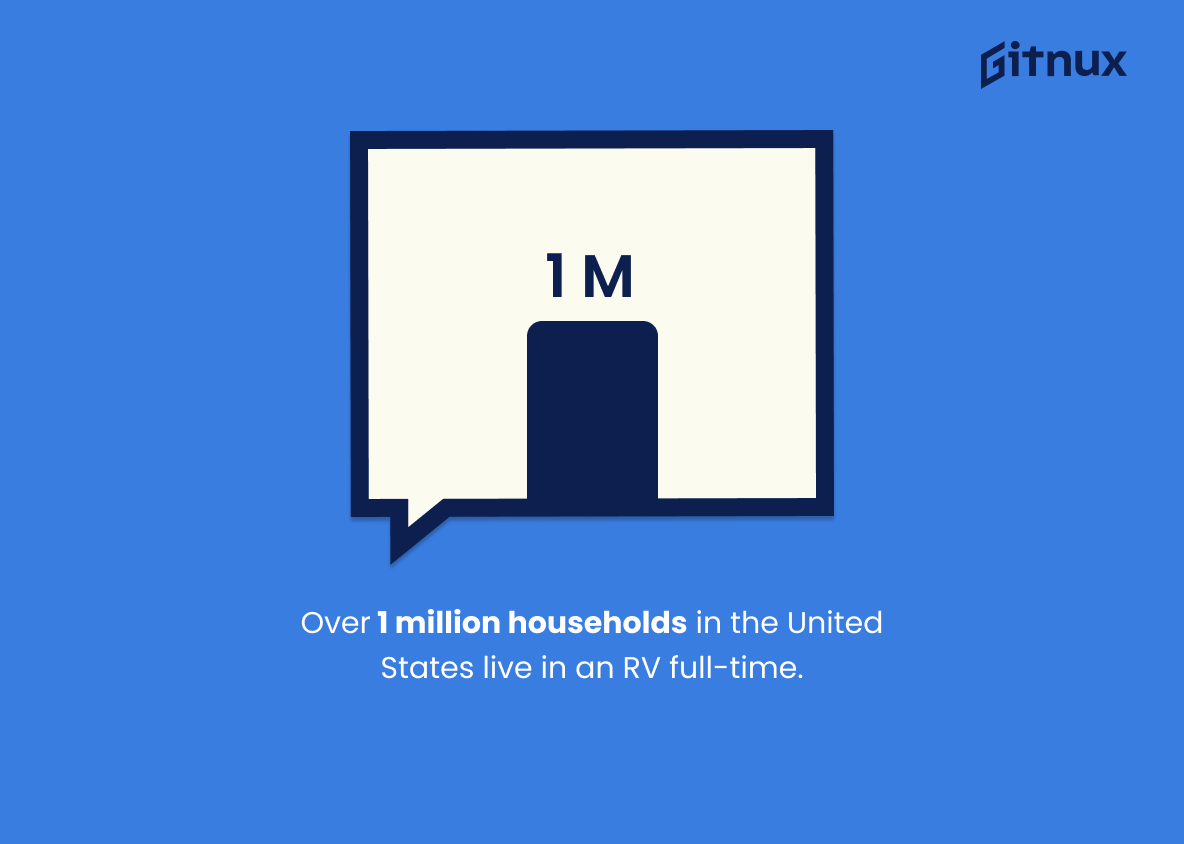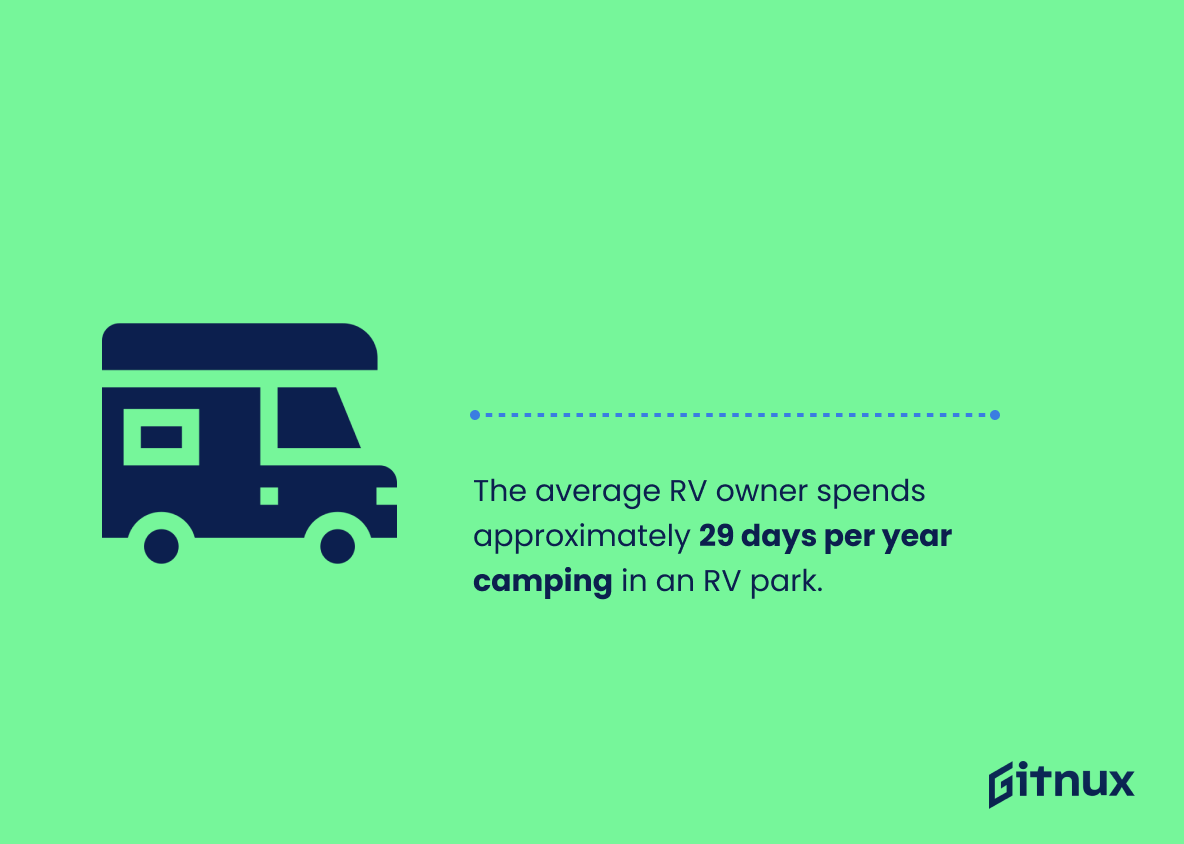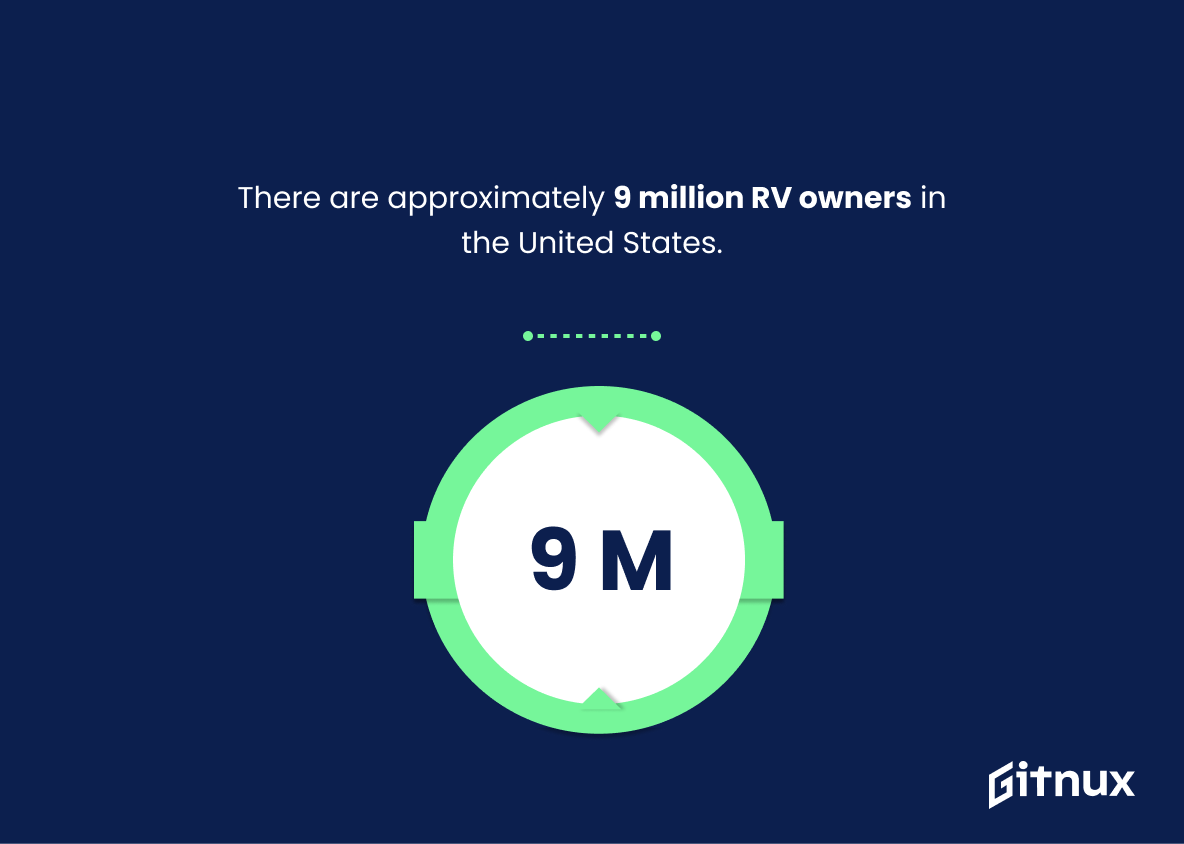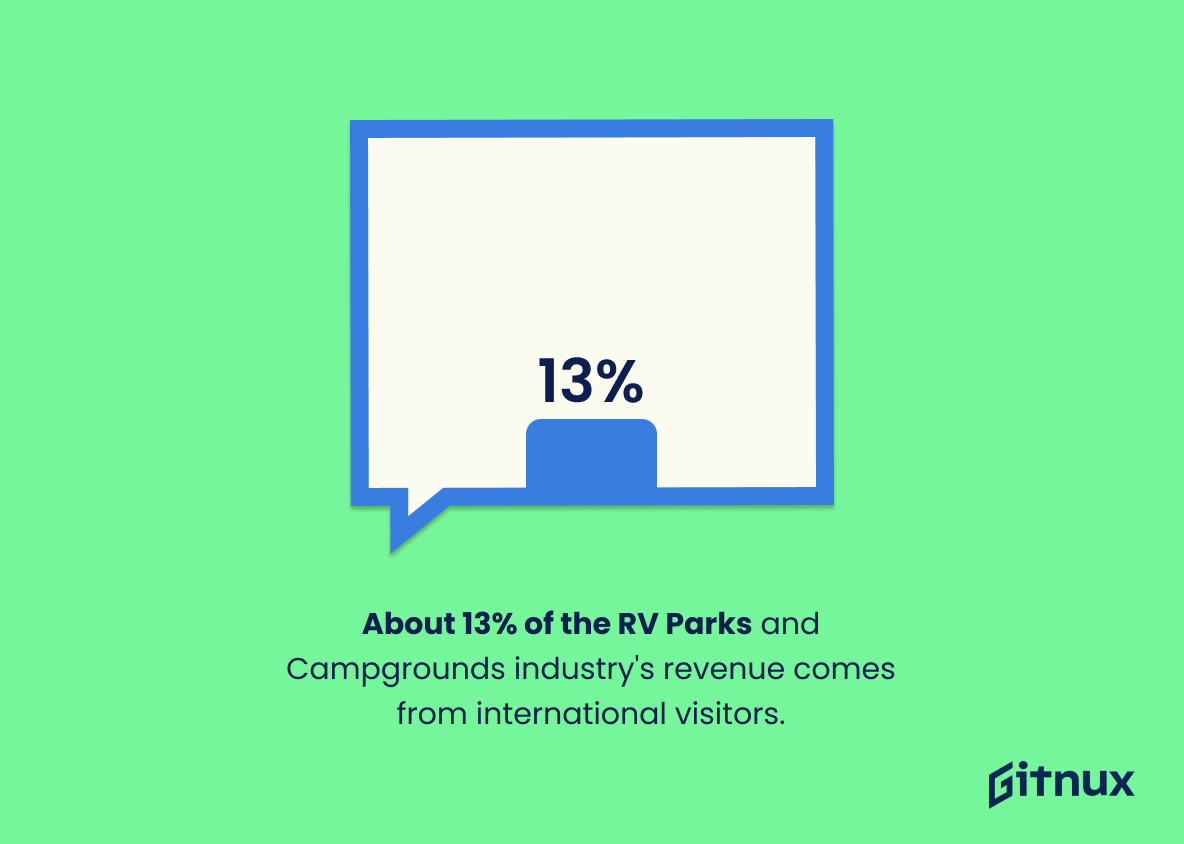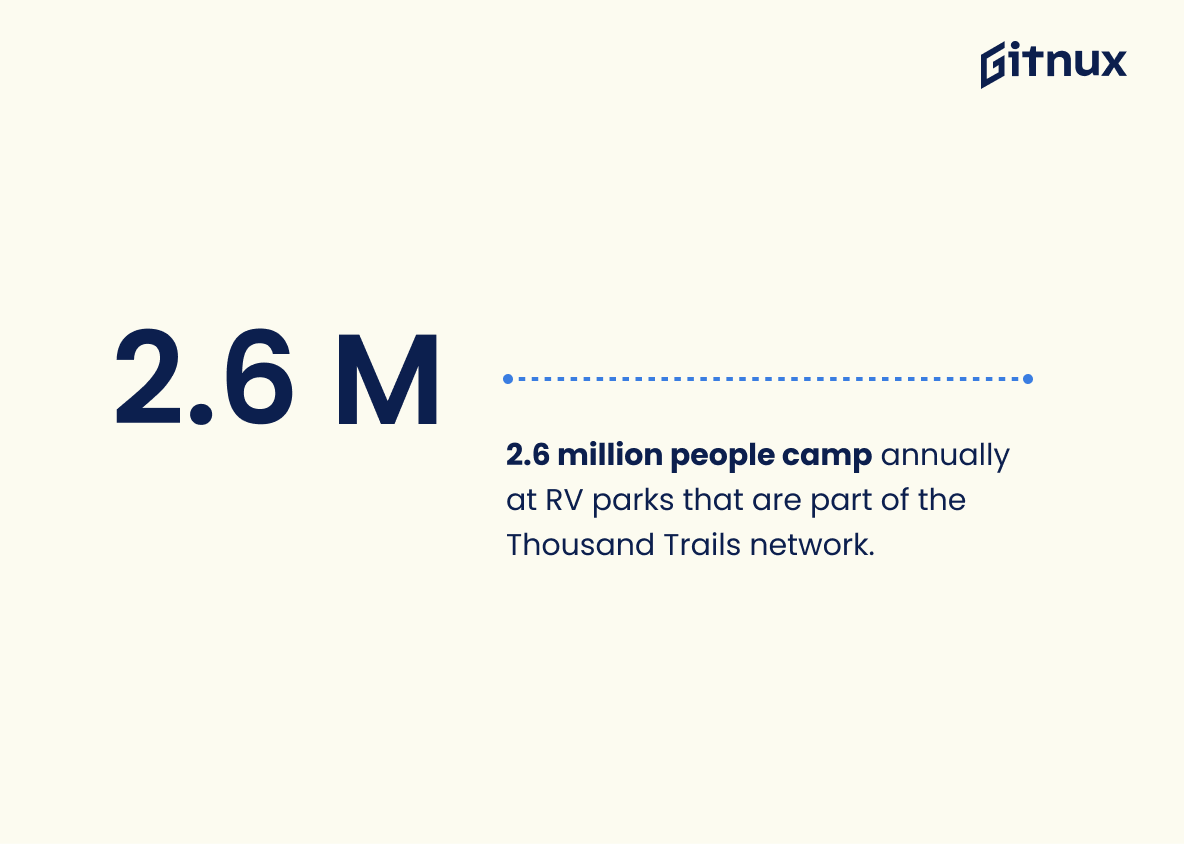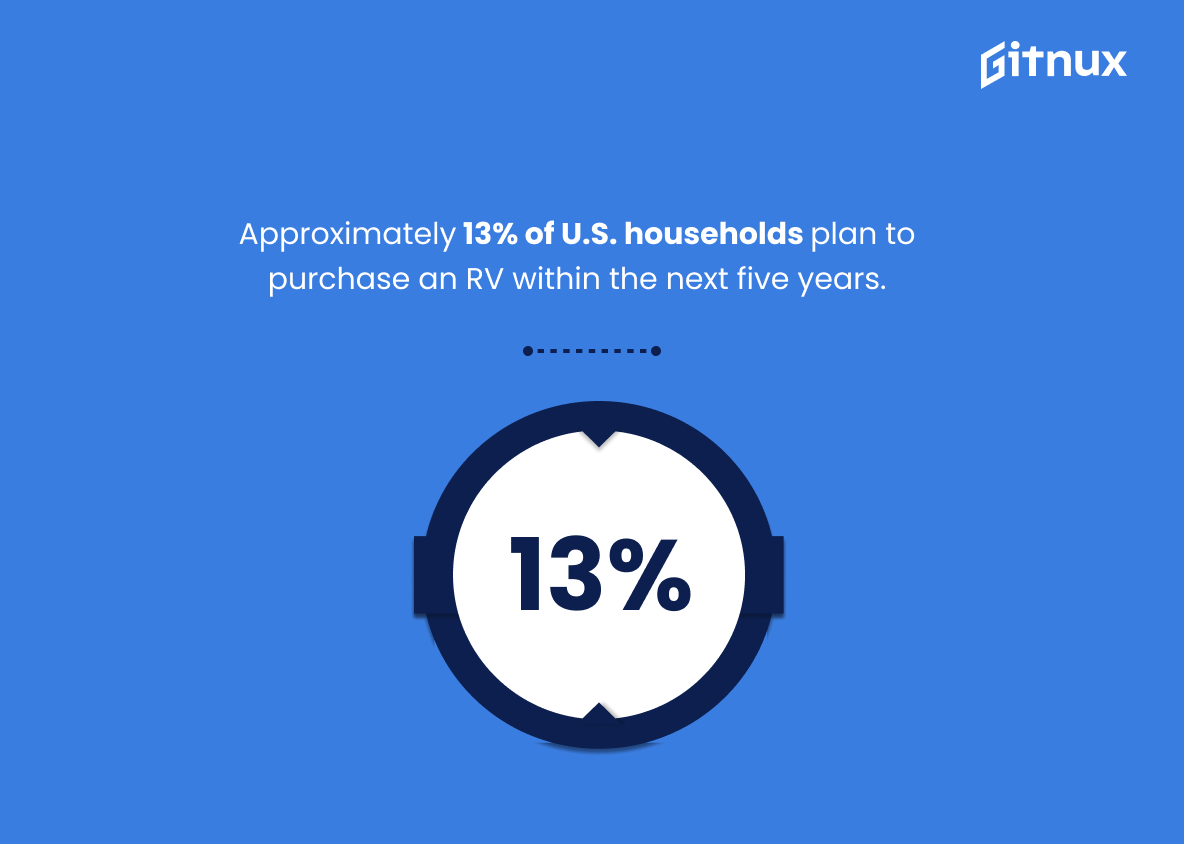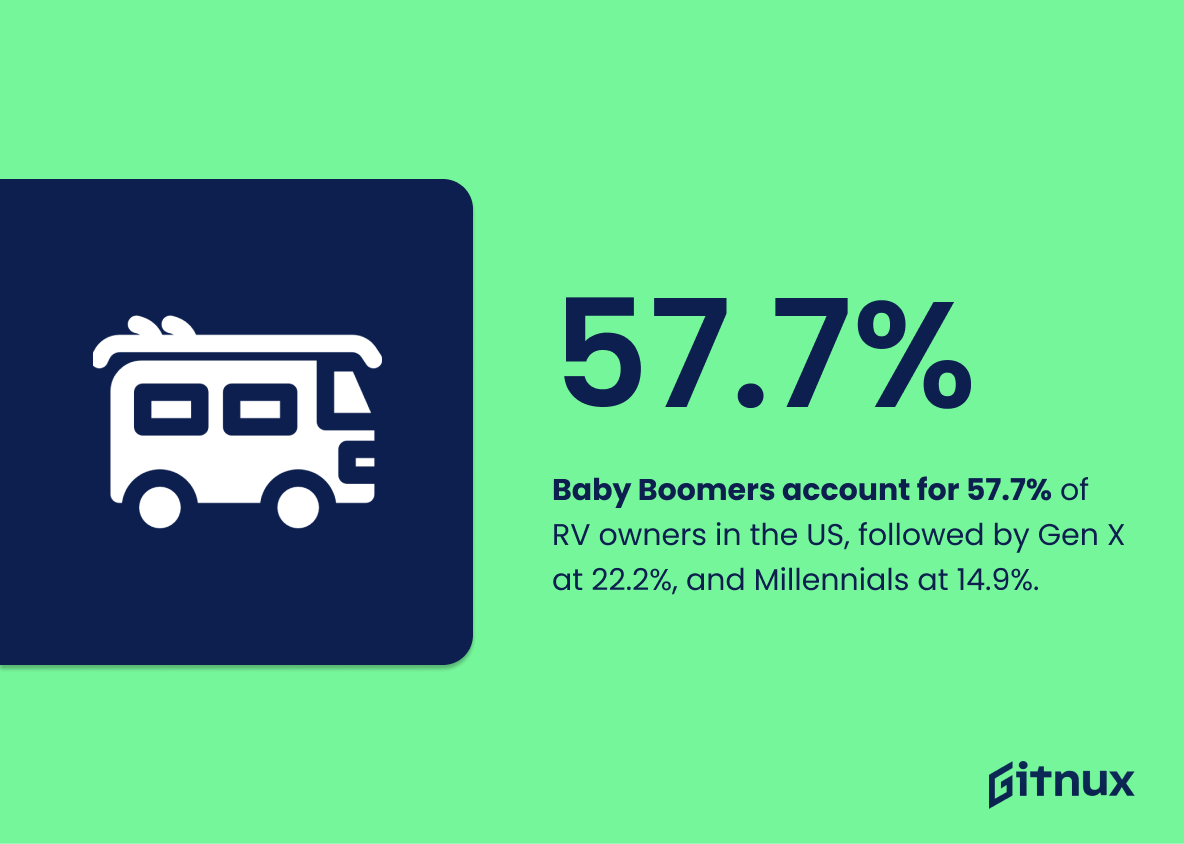The RV park industry is a booming business, generating over $5 billion in revenue annually and projected to grow at a compound annual growth rate of 4.59% by 2027. There are approximately 53,722 RV parks and campgrounds in the United States alone with an average occupancy rate of 50%. Of these parks, 78% are privately owned while 90% are family-owned businesses. Over 1 million households live full-time in RVs across the country and on average spend 29 days per year camping at an RV park or campground. The National Association of RV Parks & Campgrounds has 30,000 affiliated members throughout the US while 9 million people own RVs nationwide. 61 percent of those owners have pets which makes 52 percent of all campsites pet friendly for their furry friends. International visitors contribute 13 percent to domestic revenues as well making this industry highly profitable both domestically and abroad. With 46 million Americans going camping last year including many who chose to stay at one of 2.6 Million Thousand Trails sites for 3 nights on average – it’s no wonder why so many entrepreneurs choose to invest into this lucrative market.
This statistic is a testament to the immense success of the RV park industry, highlighting the immense potential for growth and profitability. It is a powerful indicator of the industry’s ability to generate significant revenue and provides a strong foundation for further exploration into the RV park industry. This statistic is an invaluable resource for anyone looking to gain insight into the RV park industry and its potential.
There are approximately 53,722 RV parks and campgrounds in the United States alone.
This statistic is a testament to the sheer size of the RV park and campground industry in the United States. It speaks to the immense popularity of RVing and camping, and the fact that there are so many RV parks and campgrounds available to accommodate the demand. This statistic is a great starting point for exploring the RV park industry and the trends that are shaping it.
Rv Park Industry Statistics Overview
Approximately 78% of RV parks and campgrounds in the United States are privately owned.
This statistic is a telling indication of the RV park and campground industry in the United States, highlighting the prevalence of private ownership. It speaks to the fact that the majority of these establishments are not owned by the government or any other public entity, but rather by individuals or companies. This is an important factor to consider when discussing the RV park and campground industry, as it can have a significant impact on the services and amenities offered, as well as the overall cost of staying at a park or campground.
Over 1 million households in the United States live in an RV full-time.
This statistic is a testament to the growing popularity of RV living, and its implications for the RV Park industry are clear. With over a million households living in RVs full-time, the demand for RV Parks is likely to increase, creating a lucrative opportunity for businesses in the industry.
The average RV owner spends approximately 29 days per year camping in an RV park.
This statistic is a telling indication of the RV park industry’s popularity and success. It shows that RV owners are taking advantage of the convenience and comfort of RV parks, spending an average of 29 days a year camping in them. This is a clear sign that RV parks are a desirable destination for RV owners, and that the industry is thriving.
30,000 RV parks in the U.S. are affiliated with the National Association of RV Parks & Campgrounds.
This statistic is a testament to the size and scope of the RV park industry in the United States. It shows that the industry is well-established and has a large presence in the country, with 30,000 parks affiliated with the National Association of RV Parks & Campgrounds. This is an important indicator of the industry’s success and growth, and provides valuable insight into the RV park industry as a whole.
There are approximately 9 million RV owners in the United States.
This statistic is a testament to the immense popularity of RV ownership in the United States. It speaks to the size of the RV park industry and the potential for growth in the sector. It also highlights the importance of RV parks as a source of recreation and leisure for millions of Americans.
The RV park industry employs over 289,000 people in the United States.
This statistic is a testament to the size and scope of the RV park industry in the United States. It demonstrates the sheer number of people employed in the industry, and the impact it has on the economy. It also serves as a reminder of the importance of the RV park industry in providing jobs and services to people across the country.
The RV Parks and Campgrounds industry approximately benefits from 13% of its domestic revenue from international visitors.
This statistic is a testament to the global reach of the RV Parks and Campgrounds industry. It highlights the fact that the industry is not only popular domestically, but also has a strong international presence. This is an important point to make in a blog post about RV Park Industry Statistics, as it demonstrates the industry’s potential for growth and expansion.
2.6 million people camp annually at RV parks that are part of the Thousand Trails network.
This statistic is a testament to the popularity of RV parks that are part of the Thousand Trails network. It shows that despite the challenges of the pandemic, people are still eager to get out and enjoy the outdoors. This statistic is a reminder that the RV park industry is still a viable and attractive option for people looking for a unique and memorable camping experience.
39.3% of campers say strongly Internet access is important when choosing an RV park.
This statistic is a telling indication of the importance of internet access for RV park patrons. It suggests that a large portion of campers prioritize having access to the internet when selecting a park, and that RV parks should consider providing this amenity to their guests.
Approximately 13% of U.S. households plan to purchase an RV within the next five years.
This statistic is significant for the RV Park Industry because it indicates that there is a potential for a large increase in the number of RV owners in the next five years. This could lead to an increase in demand for RV parks, as more people look for places to park their RVs. Additionally, this statistic could be used to inform decisions about how to best allocate resources to meet the needs of the growing RV park industry.
Baby Boomers account for 57.7% of RV owners in the US, followed by Gen X at 22.2%, and Millennials at 14.9%.
This statistic is significant for the RV Park Industry because it reveals the demographic of RV owners in the US. Knowing that Baby Boomers make up the majority of RV owners, RV Parks can tailor their services to meet the needs of this generation. Additionally, RV Parks can use this information to target Gen X and Millennials, who make up a smaller portion of RV owners, in order to increase their customer base.
90% of privately-owned campgrounds in the US are family-owned and operated businesses.
This statistic is a testament to the fact that the RV Park industry is largely driven by family-owned and operated businesses. It speaks to the dedication and commitment of these businesses to providing quality camping experiences for their customers. It also highlights the importance of the RV Park industry to the US economy, as these businesses are responsible for creating jobs and generating revenue.
Conclusion
The RV park industry is a booming business, generating over $5 billion in revenue annually and projected to grow at a CAGR of 4.59% by 2027. There are approximately 53,722 RV parks and campgrounds in the United States alone with an average occupancy rate of 50%. The majority (78%) of these parks are privately owned businesses that generate between $40,000-$90,000 in annual expenses.
Over 1 million households live full-time in RVs while 9 million Americans own one altogether; 61% of those owners have pets which makes 52% percent of all US RV Parks pet friendly. On average each owner spends 29 days per year camping at an affiliated National Association Park for 3.8 nights on average – making it popular among Baby Boomers who account for 57.7%, followed by Gen Xers (22%), Millennials (14%) and 13% planning to purchase within 5 years time according to 2020 statistics from KOA Campground’s North American Report . International visitors also contribute 13 % towards domestic revenue as well as 2.6 million people camping annually through Thousand Trails network programs – many expecting strong internet access when choosing their destination spot too.
Overall the data shows that the RV park industry has seen steady growth since its inception due largely to increased demand from both domestic travelers looking for affordable housing options or recreational activities such as fishing or hiking but also international tourists seeking out unique experiences away from home during their travels abroad.
References
0. – https://www.rvia.org
1. – https://www.ibisworld.com
2. – https://www.pewtrusts.org
3. – https://www.koa.com
4. – https://www.thousandtrails.com
5. – https://www.businesswire.com
6. – https://www.arvc.org

